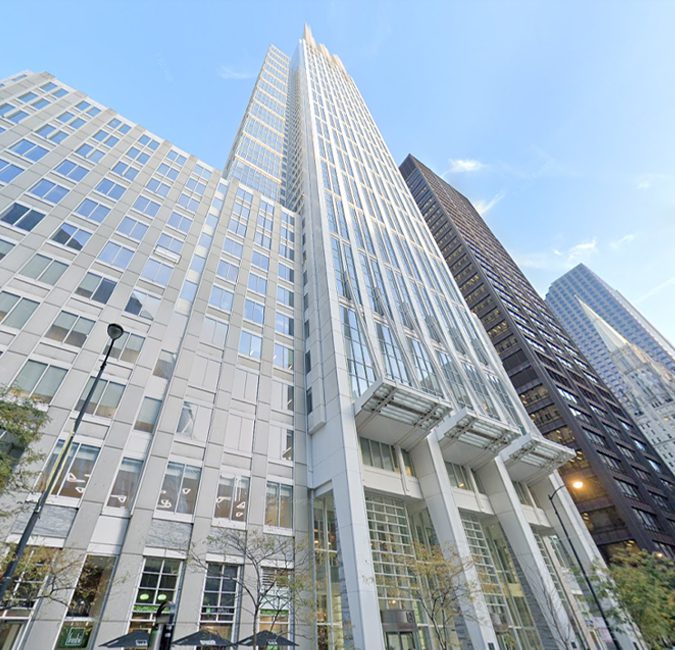The Revived Second Amendment: Firearms and Government Property
In District of Columbia v. Heller, decided almost sixteen years ago, the Supreme Court issued its first significant analysis of the Second Amendment. The decision in Heller addressed two primary questions: (1) did the Second Amendment protect an individual’s right to keep and bear arms or was it only intended to protect the right of states to arm a militia, and (2) was the District of Columbia’s total ban on the possession of handguns by individuals constitutional under the Second Amendment? With respect to the first question, the Supreme Court held that the Second Amendment protected an individual’s right to have firearms. With respect to the second question, the Supreme Court held that D.C.’s handgun ban violated the Second Amendment.
The Supreme Court’s decision in Heller was narrow, which is not surprising given that Heller was the Supreme Court’s first major Second Amendment case. The Supreme Court, for example, did not (a) expressly create a test for evaluating Second Amendment claims, (b) identify the types of “arms” that were covered by the Second Amendment, (c) rule on whether the Second Amendment protected the right to carry a firearm in public, or (d) address the myriad gun control laws throughout the country. Indeed, the Supreme Court acknowledged that it had not undertaken an “exhaustive historical analysis today of the full scope of the Second Amendment . . .” In Heller, the Supreme Court emphasized the decision’s narrow scope by stating that “nothing in our opinion should be taken to cast doubt on longstanding prohibitions on the possession of firearms by felons and the mentally ill or laws forbidding the carrying of firearms in sensitive places such as schools and government buildings . . .” The Supreme Court left these issues open for lower courts to address.
The Supreme Court’s comments concerning “government buildings” was technically “dicta,” which is not controlling authority. Most lower courts interpreted the Supreme Court’s statement concerning government buildings as creating only a presumption that restrictions on carrying a firearm into a government building were constitutional under the Second Amendment. A presumption, however, is not a definitive and final determination. The Supreme Court’s acknowledgment that it had not conducted an “exhaustive historical analysis” made it inappropriate to interpret the Court’s statements on “sensitive places” as controlling authority that barred future challenges.
The Supreme Court’s decision in Bruen has cast doubt on the continuing validity of any presumption that certain locations are “sensitive places.” First, the Supreme Court expressly held that the states and federal government had the burden of demonstrating the existence of a legislative tradition or some type of historical basis for a firearm restraint or prohibition. Second, the historical test set forth in Bruen is not consistent with the designation of certain places as presumptively “sensitive places” for purposes of the Second Amendment. Sustaining a prohibition on where an individual can carry a firearm depends on a historical analysis that looks at whether the relevant gun control laws, when compared to historical precedent, “impose a comparable burden on the right of armed self-defense and whether that burden is comparably justified . . .”
When the Supreme Court did address the issue of “sensitive places” in Bruen, it stated the following:
Although the historical record yields relatively few 18th– and 19th-century “sensitive places” where weapons were altogether prohibited – e.g., legislative assemblies, polling places, and courthouses—we are also aware of no disputes regarding the lawfulness of such prohibitions. . . . We therefore can assume it settled that these locations were “sensitive places” where arms carrying could be prohibited consistent with the Second Amendment. And courts can use analogies to those historical regulations of “sensitive places” to determine that modern regulations prohibiting the carry of firearms in new and analogous sensitive places are constitutionally permissible.
A couple of points stand out from the above statement. First, legislative assemblies, polling places, and courthouses, identified by the Supreme Court as “sensitive places,” is a narrow list of government buildings. Second, the Court based its conclusion with respect to legislative assemblies, polling places, and courthouses on historical precedents. The Supreme Court did not rely on any presumption. Third, the Supreme Court recognized that analogical reasoning could allow an expansion of this list to other locations. For example, government buildings in which administrative hearings take place may be close enough to the judicial proceedings that take place in a courthouse to justify their designation as “sensitive places.” Further, locations in which critical government functions take place might also constitute “sensitive places.” For example, government offices in which senior executive officials work would probably also constitute “sensitive places.”
The Supreme Court’s statement and analysis, however, casts considerable doubt on a blanket prohibition on carrying a firearm in any “government” building or property. For example, it is difficult to see how a parking garage or lot owned by a government entity could constitute a “sensitive place” except under the most special circumstances. It is going to take some time, however, for courts to sort out the types of government buildings and properties on which the federal government and state and local governments can prohibit individuals from carrying firearms. There exists a vast number of properties run by the federal government and state and local governments, and these properties range from legislative assemblies to restrooms in a forest preserve. It is not reasonable to assume that all of these locations are “sensitive places.”
In U.S. v. Ayala, the District Court for the Middle District of Florida had to address whether the federal government’s prohibition on carrying a firearm into a post office, or its parking lot, was constitutional under the Second Amendment. The defendant worked for the Postal Service as a truck driver. He had a Florida concealed carry permit and was otherwise allowed to carry a firearm in Florida. Under federal law, however, it is a felony to knowingly bring a firearm “into a federal facility,” which includes a post office and its parking lot. The defendant’s Florida concealed carry permit did not override federal law and authorize the defendant to carry a firearm into the post office in which he worked or its parking lot. The defendant moved to dismiss the firearm charge on the ground that a post office and its parking lot cannot constitute a “sensitive place” under the Second Amendment. The district court agreed and dismissed the firearm charge.
The government conceded that it was unable to find any laws from the 1700s or the 1800s that made it unlawful to carry a firearm into a post office. Indeed, carrying a firearm into a post office did not become a crime until 1972, over 180 years after the Second Amendment was ratified. The lack of any prohibition on carrying a firearm into a post office in the 1700s, 1800s and most of the 1900s undercut the government’s efforts to satisfy its burden of proving a direct legislative history of prohibiting the carrying of firearms into post offices. While the lack of any direct laws casts doubt on the government’s position, the government still had the option of pointing to other “sensitive place” laws that were analogically close enough to support the ban on bringing firearms into a post office. The district court held that the government was unable to meet this burden.
The district court rejected the government’s claim that “every government building . . . constitutes a ‘center’ of government deliberations,” and was skeptical that a post office could rise to this level. The district court nonetheless conducted a full historical investigation as required by Bruen. The district court addressed laws from the 1600s and 1700s that prohibited the carrying of firearms when appearing before high-ranking government officials. The district court rejected the suggestion that these narrow laws could justify banning the carrying of firearms whenever a government employee was present. The court stated that this would “come dangerously close to endorsing a de facto ban on public carry.” The court then concluded that postal employees at a local post office could not be analogized to high-ranking government officials.
The district court rejected the government’s argument that the Supreme Court held in Bruen and Heller that all government buildings are “sensitive places.” First, the district court pointed out that the government was asking the court to ignore a fundamental holding in Bruin that the government has the burden of showing a historical basis for its “sensitive place” designations. Second, the Supreme Court did not state in Bruen that all “government buildings” were “sensitive places.” The government focused on the provisional statement in Heller concerning government buildings and firearm prohibitions. The district court pointed out that while the Supreme Court in Bruen cited the statement in Heller, the Supreme Court went on to state that the historical record only showed prohibitions on the carrying of firearms in legislative assemblies, polling places and courthouses. The Supreme Court in Bruen never stated that prohibitions on carrying firearms in legislative assemblies, polling places and courthouses could justify firearm prohibitions in every government building.
This does not mean that carrying a firearm in a post office is now lawful. The district court did not enjoin the enforcement of the federal law that prohibits the carrying of firearms into post offices and their parking lots. That law remains in full effect. The district court simply dismissed the part of the indictment against the defendant concerning his carrying a firearm into the post office. The district court created a precedent that the federal government cannot prohibit the carrying of a firearm into a post office. The question now is whether other courts will follow this precedent, or if a different group of plaintiffs will be successful in having the law prohibiting firearms in post offices declared unconstitutional.
In a society where civil liberties need to be fiercely defended, the right to carry firearms stands as a contentious yet fundamental aspect of individual freedoms. The Law Offices of George M. Sanders is dedicated to safeguarding the rights of individuals in various civil rights matters. If you believe your right to bear arms has been unjustly infringed upon, seeking guidance from a knowledgeable attorney can be pivotal. If you have questions or require legal assistance regarding your right to carry firearms, don’t hesitate to reach out to The Law Offices of George M. Sanders. Your rights are worth protecting, and seeking informed legal counsel is an essential step in ensuring they remain safeguarded.
Previous Post
The Revived Second Amendment: Concealed Carry And “Sensitive Places”
In New York State Rifle & Pistol Association v. Bruen, the Supreme Court found a New York state law unconstitutional that conditioned the granting...
NEXT Post
The Second Amendment and The Butterfly Knife and Pocket-Knives
When most people think of the Second Amendment, they probably think of firearms and gun control laws. This is not surprising. Gun control efforts...







